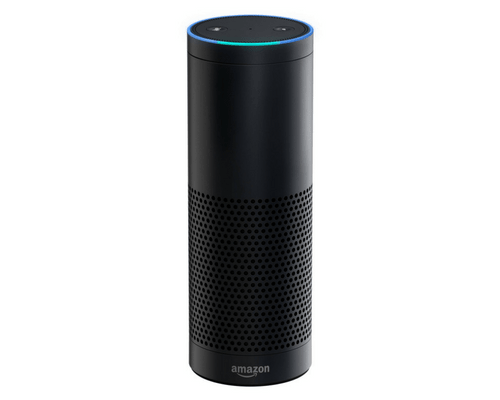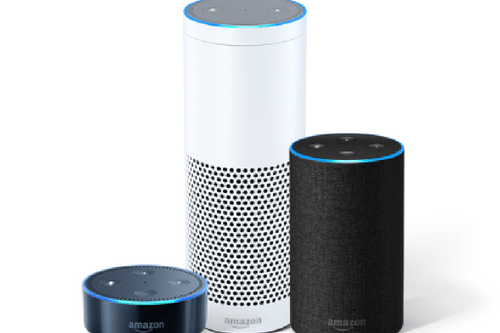Discover how Amazon Alexa listens to you, translating your voice into commands so it can play music, turn the lights on, or order stuff from Amazon.
Amazon Alexa – named after The Royal Library of Alexandria, Egypt – is a voice-control system developed by Amazon. It lets you speak your requests to an Amazon Echo smart speaker, and the system executes many simple tasks like dimming the lights of your room or playing your favorite music tracks from Amazon Music, Spotify, TuneIn and more. The original version of Alexa featured an “always on” or “always listening” mode. It offered a 360-degrees sound using a 2.5-inch woofer and a 2.0 inch tweeter. The upgrade or the second version of Alexa popularly known as the “All new Echo” offers much more than just Bluetooth connectivity, setting alarms, to-do lists, playing audio books, streaming podcasts, providing weather forecasts, reading PDFs, answering trivia, warning you of traffic conditions and supplying other types of information in real-time. The upgrade second version offers all those features, and, in addition, features a smaller, simpler design with better aesthetics and supposedly improved audio quality. The USP for Amazon Alexa is a significantly reduced price of just $99 in the United States.
An intelligent voice controlled system
The Alexa devices connect to a voice controlled intelligent personal assistant that responds to the name “Alexa”. It is a “wake up” word in the sense that whenever the word is spoken by a user, the Alexa system senses that it is being called to perform some task and “Starts listening” to the user voice commands. The wake-up word can be changed to “Amazon” or “Echo” or any other word as desired by the user.
Once the system hears the wake-up word, the device gathers all voice commands that immediately follow it and sends them to a natural voice recognition software system – An Amazon cloud service called Alexa Voice Service. It interprets the commands, executes the associated actions and sends back an appropriate response to the user. The device features an array of sensitive microphones with noise cancellation technology, which have the capability of picking up your voice from across the room even while some music is being played on and there are environmental noises that can distract other normal speakers from effectively hearing the voice commands. Moreover, you can ask questions to Alexa from any direction within the room and the 360-degrees sound capturing feature ensures you don’t have to get up or set the device in the right directions so the system can “hear” you correctly.
Amazon Brings Alexa Business Skills To Your Office
Amazon announces Alexa for Business – Discover how does Alexa create a new breadth of skills useful to CEOs and their companies.
What can you ask Alexa?
Even though Alexa still has a long way to go in being a highly effective personal “virtual assistant”, there are still plenty of things you can ask Alexa to do for you. A feature known as “Skills” in the Alexa app lets you customize your Echo device and acquire certain capabilities to suit your preferences.
The Skills section supports several skill categories such as Smart Home, Food & Drink, Connected Car, Music & Audio, Travel & Transportation and many more. To start with Alexa you are required to tap the “Enable Skill” option and select a category that you want to engage with.
Alexa uses speech recognition software and requires you to link to an existing account, or use separate subscriptions to get started. For example to use Uber cab services in Alexa, you need to sign into your Uber account within the Skills section of the app. Here are a few examples of what you do with Alexa:
- “Alexa, wake me up at 6 in the morning”
- “Alexa, ask The Guardian for the top trending stories”
- “Alexa, what’s the weather in Columbus, Ohio?”
- “Alexa, play Beethoven from Amazon Music”
- “Alexa, shuffle my favourites playlist”
- “Alexa, turn it down”
- “Alexa, will it rain in the evening today?”
- “Alexa, read my audiobook”
- “Alexa, what’s in the local news?”
- “Alexa, ask Uber to request me a ride”
- “Alexa, turn on the coffee machine”
Alexa Answered All Questions about Sunflower Lab at Propelify Festival 2017
Propelify, a festival and business conference where investors, innovators, speakers, startup minds, and tech professionals gather. It is considered as one of the biggest gatherings of professionals in Northeast, bringing people from connected areas. It took place in New Jersey last week and hosted many great things such as Alexa intelligent apps, drone races, startup tech stalls, music, drinks, food, VR theaters, and much more.
Amazon Lex – The power behind Alexa
Amazon offers several services including Amazon Lex – A web service that allows businesses to integrate conversational interfaces for voice and texts in software applications. Amazon Lex powers Amazon’s virtual assistant Alexa which is a part of Amazon’s artificial intelligence suite (Amazon AI).
Technically, Amazon Lex is a deep-learning algorithm that allows a developer to create a conversational bot – a chat bot – having an artificial “personality”. It tries to simulate a human assistant by using automatic speech recognition features to convert almost any type of speech into text. It uses a natural language processing algorithm to understand spoken instruction as well as user intent. AWS Lambda, a server-less compute service from Amazon runs your code in response to events and automatically manages all underlying resources, fulfills the “intent” aspect. Amazon Cognito is used for user authentication while Amazon Polly manages the text-to-speech part in the Alexa system. The AWS Mobile Hub is used to automatically provision bots from a template.
You might also like
Stay ahead in tech with Sunflower Lab’s curated blogs, sorted by technology type. From AI to Digital Products, explore cutting-edge developments in our insightful, categorized collection. Dive in and stay informed about the ever-evolving digital landscape with Sunflower Lab.





